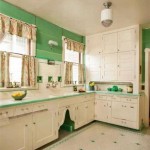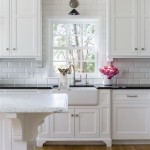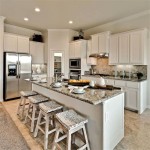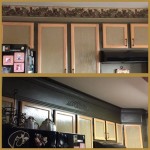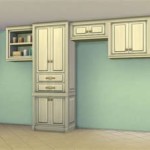Inexpensive Wood Kitchen Cabinets: Balancing Cost and Quality
Kitchen renovations often represent significant financial investments for homeowners. Cabinets, in particular, frequently constitute a substantial portion of the overall budget. While custom, high-end cabinetry offers premium materials and features, inexpensive wood kitchen cabinets present a viable alternative for individuals seeking to update their kitchens without incurring excessive costs. This article explores the advantages, considerations, and selection process for acquiring affordable wood cabinetry while maintaining acceptable levels of quality and durability.
The term "inexpensive" can be subjective, but in the context of kitchen cabinets, it generally refers to options constructed from readily available wood species, often with simplified construction methods and fewer embellishments. This does not necessarily equate to inferior quality, but rather a strategic approach to material selection and manufacturing that lowers the overall price point.
Understanding Wood Types and Their Impact on Cost
The type of wood used in cabinet construction directly influences the final price. Hardwoods, such as maple, oak, cherry, and walnut, are generally more expensive than softwoods like pine or alder. This price difference stems from factors such as the wood's density, grain patterns, durability, and availability.
Inexpensive wood cabinets frequently utilize softwoods, specifically pine, which is readily available and easy to work with. Pine cabinets, while less resistant to dents and scratches than their hardwood counterparts, can be effectively used in kitchen settings if properly finished and maintained. They also offer a naturally rustic aesthetic that appeals to certain design preferences.
Another approach to cost reduction involves using engineered wood products like plywood or particleboard as the cabinet box material, paired with solid wood doors and drawer fronts. Plywood offers superior stability and moisture resistance compared to solid wood, making it a practical choice for cabinet sides and backs. Particleboard, while less water-resistant, can be used in areas less prone to moisture exposure, such as shelves or drawer boxes. These engineered wood options can significantly reduce the cost of the cabinet without compromising structural integrity.
Furthermore, the grading of the wood also affects the price. Wood with fewer knots and imperfections commands a higher price. Inexpensive cabinets may utilize wood with more natural variations, which can add character but may also require more careful finishing to ensure a uniform appearance. Understanding these material differences is crucial for making informed decisions about balancing cost and desired aesthetics.
Construction Methods and Their Role in Affordability
The construction methods employed in cabinet manufacturing are another critical factor affecting the price. Complex joinery techniques, such as dovetail joints or mortise-and-tenon joints, require skilled labor and more time, thus increasing costs. Inexpensive cabinets often utilize simpler joinery methods, such as butt joints secured with screws or staples, or dado joints which are strong and relatively inexpensive to produce on machinery.
The use of face-frame construction versus frameless (European-style) construction can also impact the price. Face-frame cabinets feature a frame around the cabinet box opening, which adds stability and a traditional look. Frameless cabinets, on the other hand, have a cleaner, more modern aesthetic and often offer slightly more interior storage space. The construction of a sturdy face frame adds to the cost, therefore frameless cabinets can sometimes be more affordable, depending on the materials used.
The level of customization also plays a significant role in price. Stock cabinets, which are pre-manufactured in standard sizes and styles, are the most affordable option. Semi-custom cabinets offer limited modifications to stock sizes and finishes, allowing for some degree of personalization while still maintaining cost-effectiveness. Custom cabinets, which are built to specific dimensions and design specifications, are the most expensive choice. By opting for stock or semi-custom cabinets, homeowners can significantly reduce their spending on cabinetry.
Simplifying the design of the cabinets can also contribute to cost savings. Intricate moldings, raised-panel doors, and decorative hardware add to the overall expense. Choosing simpler door styles, such as shaker doors or flat-panel doors, and opting for basic hardware can help keep the budget in check.
Finishing and Hardware Options for Cost-Effective Cabinetry
The finish applied to wood cabinets plays a crucial role in their durability, appearance, and overall cost. Painted finishes are generally more affordable than stained finishes. This is because paint hides imperfections in the wood, allowing for the use of less expensive wood grades. Staining, on the other hand, highlights the natural grain patterns of the wood, requiring a higher-quality wood with fewer blemishes.
The type of paint or stain used also affects the price. High-quality paints and stains that offer superior durability and resistance to moisture and wear will be more expensive than lower-grade alternatives. However, investing in a durable finish is crucial for ensuring the longevity of the cabinets, even if it means paying a slightly higher upfront cost.
The application method also influences the price. Hand-applied finishes are generally more expensive than machine-applied finishes. This is because hand-applied finishes require more time and skill. However, machine-applied finishes can provide a more consistent and uniform appearance.
Hardware, such as knobs, pulls, hinges, and drawer slides, also contributes to the overall cost of the cabinets. Basic hardware options made from inexpensive materials like plastic or stamped metal are the most affordable choice. Upgrading to higher-quality hardware made from solid brass, stainless steel, or other durable materials will increase the cost. Soft-close hinges and drawer slides, which offer a smoother and quieter operation, are also more expensive than standard options. However, investing in durable and functional hardware can improve the overall user experience and extend the lifespan of the cabinets.
Choosing readily available hardware styles is another way to economize. Custom or unusual hardware designs often require longer lead times and higher prices. Selecting standard hardware designs from readily available sources can help keep costs down. Furthermore, consider purchasing hardware in bulk to take advantage of volume discounts.
When considering inexpensive wood kitchen cabinets, it is important to carefully evaluate the options available and make informed decisions based on your budget, aesthetic preferences, and functional needs. By understanding the factors that influence the cost of cabinetry, such as wood type, construction methods, finishing options, and hardware choices, homeowners can find affordable solutions that meet their requirements without sacrificing quality or durability. Careful planning and strategic decision-making are essential for achieving a beautiful and functional kitchen within a reasonable budget.
Regular maintenance is also crucial for preserving the appearance and extending the lifespan of inexpensive wood kitchen cabinets. Cleaning cabinets regularly with a mild detergent and water, avoiding harsh chemicals or abrasive cleaners, and promptly addressing any spills or stains will help keep them looking their best. Applying a protective finish, such as a wax or polish, periodically can also help protect the cabinets from moisture and wear.
Ultimately, the suitability of inexpensive wood kitchen cabinets depends on individual priorities and circumstances. For homeowners who prioritize cost savings above all else, they can represent a practical and viable solution. However, it is essential to carefully assess the trade-offs between price and quality and to choose options that offer a reasonable balance of both. With informed decision-making and proper maintenance, inexpensive wood kitchen cabinets can provide years of reliable service and contribute to a functional and aesthetically pleasing kitchen space.

Affordable Kitchen Cabinet Ideas The Home Depot
How To Find Gorgeous Yet Affordable Kitchen Cabinets

How To Find The Best Kitchen Cabinets 2024 Guide Forbes Home

The Best Inexpensive Kitchen Cabinets Designers Swear By Interior Furniture Design

Kitchen Cabinets Pictures Options Tips Ideas

What Wood Is The Est For Cabinets 4 Less

Solid Wood Oak Kitchen Cabinets From

Inexpensive Kitchen Cabinets Semi Custom Woodmark Traditional Design
:strip_icc()/101488884-de58117ab75d488e90659ef6f06d0142.jpg?strip=all)
Low Cost Cabinet Makeover Ideas

Kitchen Cabinet Refacing An Inexpensive Way To Get New Cabinets Eclectic Maple Light Wood Kitchens
Related Posts

